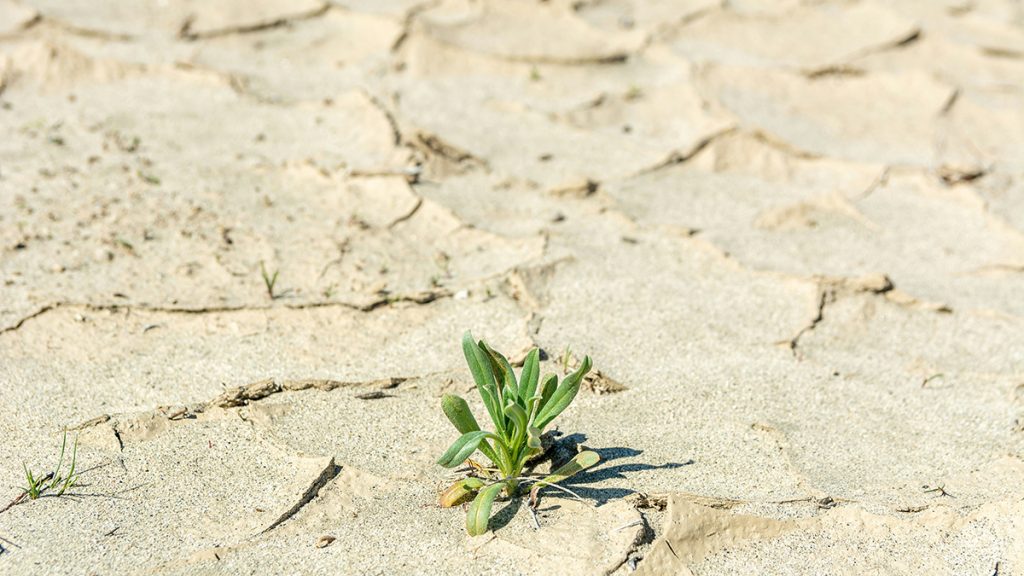
Photo: Steve Harvey | Unsplash
Eight tips from environmental reporters in covering climate crisis
Understanding — and explaining — the science isn’t easy, but there are ways to become an expert
Nikita Ponomarenko has been reporting on the climate crisis since 2020, mostly as an international reporter, but also as a local journalist working in the U.S. and Russia. In May 2025, he graduated with a master’s degree from the Missouri School of Journalism.
Climate change is affecting local communities across the planet, with sea level rise, climate-induced famines, locust swarms, fires and floods. Whole states like Tuvalu have already lost a significant part of their land to the rising ocean, while densely populated regions like Bangladesh are getting hit by both rising waters and increasing droughts from diminishing mountain glaciers. Locusts and droughts are affecting East Africa with increasing frequency, damaging crops, access to drinkable water and overall political stability. Such communities, whose way of living often depends on land, are the most vulnerable from the climate threat.
Is our journalism keeping up? Environmental journalists over the past decade have paid much more attention. However, intensive climate coverage is often done in the exceptional moments like weather disasters or big political events, or from “numbers conferences” that describe temperature rise targets.
Veteran environmental reporters say we need more — more connections to action, more description of the science, more of a sense of how climate change affects every other sphere of life.
“Don’t just transcribe — make them understand,” one climate reporter said.
Eight environmental reporters across the U.S. described how they cover the climate crisis in these days where the media space is overloaded with unverified information and social distrust is growing. Some of these journalists have been working on the beat for just a few years, others for 25 years. The reporters gave advice for those who have just entered or may be thinking of entering into this growing field of climate journalism. Here are some points on which most of them agreed:
Develop a network of scientists who can explain science
Understanding scientific research as a process is a key skill for climate reporters, several journalists said. That’s why it’s crucial to develop a network of contacts in academia – not just to get quotes, but to understand the issues better.
“You just have to do a little bit of studying in advance to know what they’re talking about. And also, when you are talking to an academic, stop them and say ‘Hey, what did that mean? Can you explain that?’ And they will explain it,” one national news reporter said.
One reporter advised that a new reporter immediately reach out to all natural resources government agencies in the area. It is also important to connect with local environmental non-governmental organizations; they are often willing to talk and share information.
Be a sponge
Expert journalists advised to not just talk to scientists but to absorb their discourse and learn their language. A reporter who is just coming into the climate beat should be on the mailing lists of multiple climate-related think tanks, universities, activist groups, and government agencies.
Climate change touches almost every aspect of life, so it can be overwhelming for reporters who are just starting out on this beat, one reporter said. “But it can be easy to mitigate that feeling by picking out certain interest areas within the larger beat,” he advised.
Educate yourself
On-the-job training makes a difference. You need to understand basic chemistry and physics if you’re going to cover oil and gas, just as you need to study biology in order to cover biodiversity.
“For example, in fire science, learning more about the landscapes and how they burn, learning more about the weather patterns and set of conditions that will increase fire risks, and knowing that not every fire is going to be the same, knowing that different areas are going to burn, different communities burn differently than wildland,” one reporter said. “All of that has just come from reading and talking to researchers again and again and again, asking the same questions over and over again and just making sure that I’m constantly in a position to learn and to stay as open-minded as possible, while kind of loading this arsenal of background and facts.”
Learn to explain science yourself
Climate change is complicated — some parts of it are beyond doubt, and yet other aspects, like geoengineering or links between particular weather events and climate changes, are very nuanced. It can be very important for a reporter to understand where significant groups of scientists disagree and where the consensus is stronger than it appears from existing coverage.
Explaining complicated scientific concepts to the readers is a very important skill for this beat. “Don’t just transcribe, make them understand,” one of the experts said.
Accountability is at the heart of climate journalism
Some reporters said that often reporting on climate change means finding who is responsible. This could be hard for this beat. It has to cover human causes of the climate crisis, the observable changes in nature, and how humans are dealing with both their responsibility for the crisis and its consequences.
“I think it’s irresponsible to report on climate change and not call out the drivers by name, by corporation, by CEO, by salary package,” one reporter said. “It is my anger that drives me into climate reporting and it is very important to me to make sure a reader walks away knowing who to be angry at.”
Increasingly, the job of a climate reporter is to give advice to people, help them cope with the disaster. It is important to “allow people to come to their own conclusions given a good amount of information,” another reporter said. “I feel like that’s a lot stronger than just saying ‘this is really terrible, the end.’”
A couple of reporters added that increasingly their work is fighting fake science, articles or experts that just pretend to be scientific and, in reality, serve private interests, government propaganda, or just represent badly done research. “It’s up to us as journalists to be sort of the firewall between the public and that bad science, if you will,” one reporter said.
Use the reporting tools available from other organizations
Almost all those interviewed said they use the tools available with the Society of Environmental Journalists — be it lists of available experts, funding to do reporting projects or annual conferences. Climate Central is another helpful platform. It tracks weather conditions and climate trends and provides regular updates on local climate and weather conditions. The list of such organizations keeps growing – SciLine is a project within the American Association for the Advancement of Science and it’s growing in popularity, experts said. This system puts reporters in touch with science experts who are relevant for their stories.
Avoid sensationalist predictions
Quite often it is tempting to do “knee-jerk” reporting and quickly cover climate research or focus on the most extreme and radical predictions out of the specter of computer model simulations, reporters said. These impulses should be avoided because they misrepresent reality and can damage the trust between journalists and their audiences.
“If you’re going around throwing sweeping statements, saying that climate change is causing this and it’s causing that, but you don’t fully understand the nuance…. I’d argue that you’re causing more damage than good,” one reporter said.
At the same time, it is important to keep an open mind about science, reporters said. While there is consensus on things like the causes of the climate crisis, some of the science aspects (like geoengineering) could be controversial. Thus, reporters shouldn’t “get preachy” and get too entrenched in their views, two reporters said.
“Not all solutions are perfect solutions,” one reporter said. “So don’t package these climate solutions as perfect solutions, but explore the nuances. Be wildly skeptical.”
Stop covering the climate crisis as “a matter of degrees”
A lot of global political efforts are shaped around stopping the global heating at 1.5-2°C compared to the preindustrial average temperature. However, this has been expensively covered for many years, and the nature of climate reporting has evolved in the past few years, several reporters said. Telling the same story again and again can lead to fatigue and cause people to tune out rather than pay more attention.
Several journalists said that it’s best to tell climate stories in relatable ways and to make it less about distant and abstract numbers. Others also cautioned to avoid climate jargon — words common to scientists and climate policy experts but could be little known to the readers.
Is the term “climate change” too polarizing now?
Multiple reporters complained about growing polarization and increasing distrust. Several journalists, mostly on the local level, said that they tend to avoid using the term and instead use other similar words. They described “climate change” as a “trigger word” that often produces immediate negative feedback from readers.
Reporters use techniques to build up their narrative to a point where they can address climate change without appearing like the whole story is about it. That can be done closer to the story’s end, or appear without direct mention of “politicized” wording. One reporter described it as using a “trojan horse.”
“I think people really do have a sense that the world around them is changing in ways that are not necessarily good for them and they want to understand why. And it’s scary,” said another reporter. “Whatever you can do to bring clarity and not necessarily to provide hope, but to give people a framework for understanding — that work has value.”
Cite this article
Ponomarenko, Nikita (2025, July 3). Eight tips from environmental reporters in covering climate crisis. Reynolds Journalism Institute. Retrieved from: https://rjionline.org/news/eight-tips-from-environmental-reporters-in-covering-climate-crisis/
